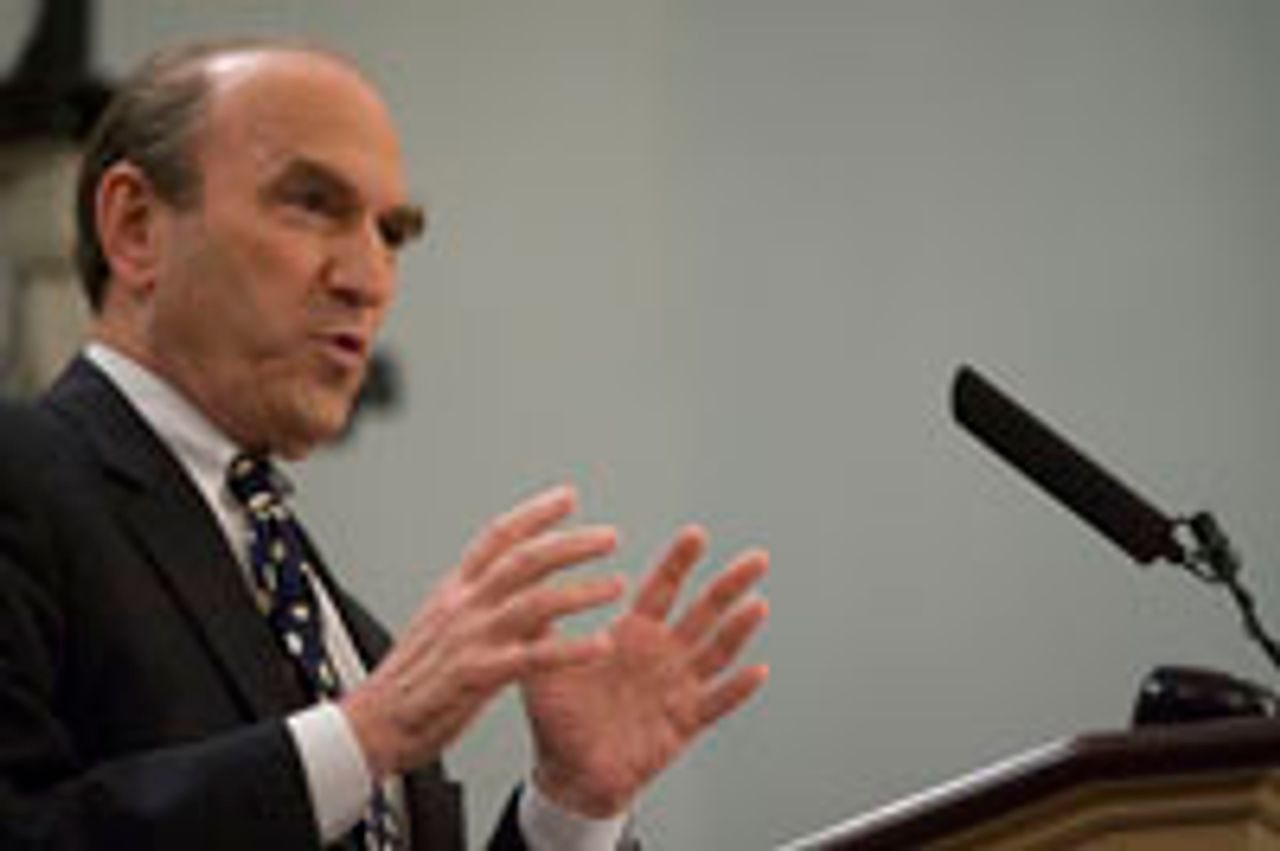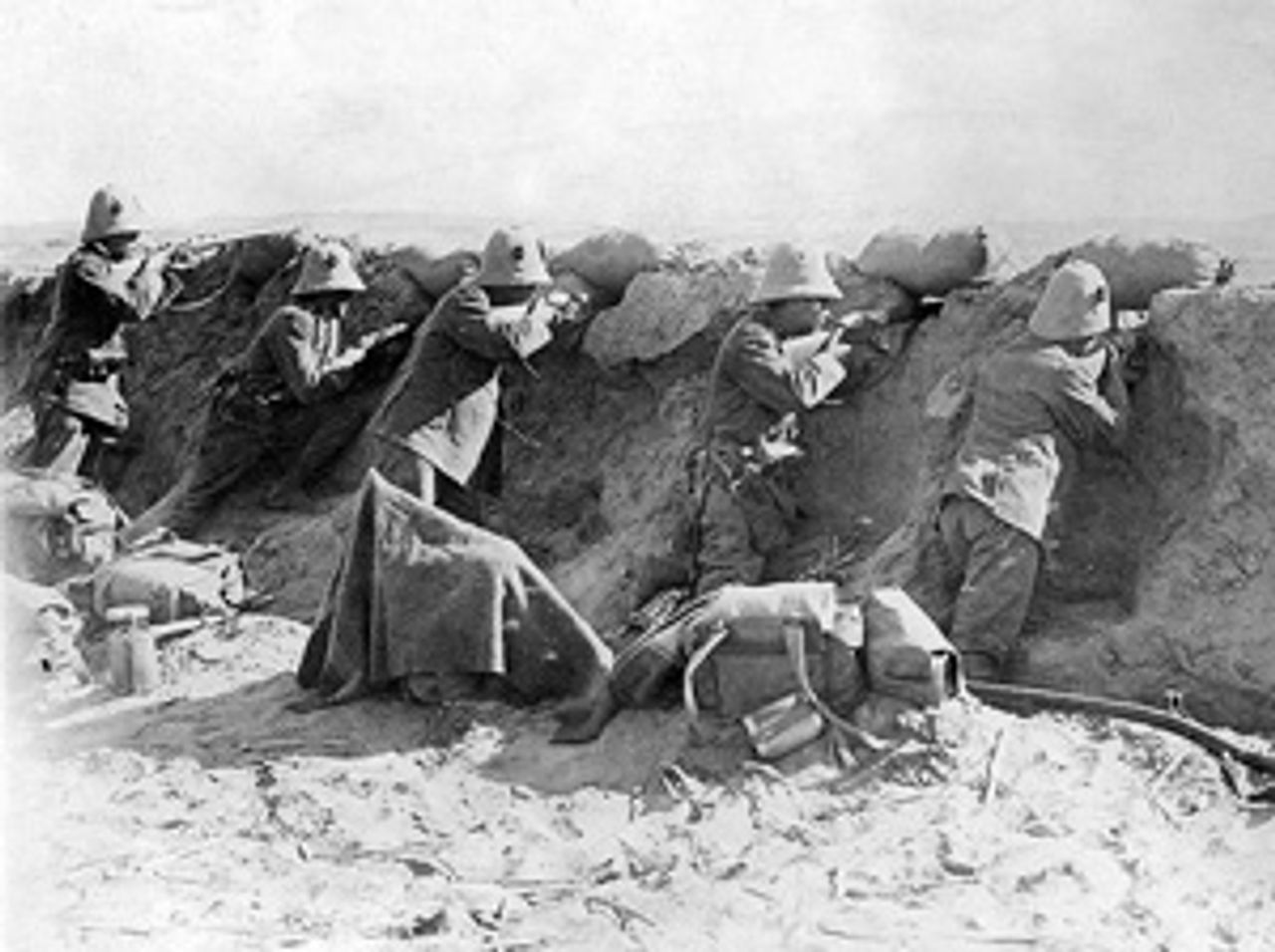This Week in History provides brief synopses of important historical events whose anniversaries fall this week.
25 Years Ago | 50 Years Ago | 75 Years Ago | 100 Years Ago
25 years ago: Downed plane lifts lid on illegal US operations in Nicaragua
 Elliott Abrams photographed in 2011 [Flickr: Miller_Center]
Elliott Abrams photographed in 2011 [Flickr: Miller_Center]This week in 1986 strong evidence emerged that the Reagan administration was illegally supporting the right-wing Contra movement in Nicaragua, Washington’s proxy in a six-year dirty war to topple the nationalist Sandinista regime headed by Daniel Ortega.
On October 5, 1986, a US-made plane carrying arms to the Contras was shot down over southern Nicaragua. Of the three Americans aboard the plane, only one, Eugene Hasenfus, survived. The Nicaraguan government accused the US of arming the Contras, which would have been a violation of the recently passed Boland Amendment. This the White House vigorously denied, with Reagan declaring the flight had “absolutely nothing” to do with the Central Intelligence Agency (CIA).
It very quickly became clear the opposite was the case. Hasenfus soon told reporters in Nicaragua that the flight was part of a large-scale operation controlled by the CIA. He, along with one of the two deceased pilots, were longtime CIA operatives, going back to their days of operating “Air America” flights in Southeast Asia during the Vietnam War. The clandestine Nicaragua operation was in fact being managed directly out of the White House, under the day-to-day leadership of Lt. Col. Oliver North. Also directly involved were Assistant Secretary of State Elliott Abrams and top staffers in the office of Vice President George Bush.
The Reagan administration only deepened its cover-up. It falsely asserted that Hasenfus was the employee of an extreme right-wing organization called the World Anti-Communist League, headed by retired US Major General John Singlaub. He denied involvement, saying the claim was government “misinformation.”
50 years ago: Strike of 120,000 in UAW-Ford contract talks
On October 3, 1961, over 120,000 members of the United Auto Workers union (UAW) went out on strike against the Ford Motor Company over an impasse in negotiating a new contract. The strike was called off on October 11, although a few locals stayed out longer.
The three-year deal included a 6 cents an hour or 2.5 percent raise, whichever was greater. This would bring the base hourly wage to over $3.00 per hour, about $22 in today’s money. The deal also included substantial improvements in unemployment insurance, health care coverage, pension rates, life insurance, and hospitalization coverage.
The economic gains were not in dispute and were largely modeled on a contract approved a month earlier for General Motors. Instead, the UAW called the strike over “non-economic” issues, including its demand that Ford allocate more money to pay for additional full-time union committeemen.
The concessions offered by GM and Ford were based in large measure on the continuing domination of the US automakers in global market share. The UAW staked its members’ futures on the notion that this state of affairs would continue indefinitely. Yet already by 1961 signs of crisis were emerging. After Ford, the UAW was set to open contract negotiations with Chrysler, the third largest US automaker, which had over the previous six years radically reduced its workforce—from 120,000 hourly workers in 1955 to under 60,000 in 1961, creating large-scale unemployment in Detroit.
75 years ago: London workers rout fascists in “Battle of Cable Street”
On Sunday, October 4, 1936, tens of thousands of London workers stopped Oswald Mosley’s British Union of Fascists from marching through the east end of London in what came to be called the “Battle of Cable Street.”
The virulent anti-Semite’s planned march was a blatant provocation, as the east end was home to many Jewish families. Numbering 2,000, the Blackshirts assembled at Royal Mint Street, Stepney, greeting Mosley’s arrival with raised arm fascist salutes. While waiting for police approval to begin the march the fascists sang, “The Yids, the Yids, the Yids must go.”
By mid-afternoon a crowd of some 100,000 workers had gathered around Gardiners Corner on Cable Street, Whitechapel to oppose Mosley. In the days before the event, messages were chalked onto walls in the capital’s east end calling upon workers to oppose the fascists— “Bar the road to Fascism”—and echoing the Spanish anti-fascist slogan “No Pasaran!” with the words, “Mosley shall not pass.”
Workers overturned a lorry and its load of bricks, creating a barricade on Cable Street. When the fascists approached workers hurled bricks at them. The crowd also forced the retreat of hundreds of truncheon-wielding police, some on horseback, who had attempted to clear the street to allow Mosley’s march.
The summer had witnessed a series of attacks on Jews and Jewish businesses by Mosley’s Blackshirts. There had been violent clashes between the British Union of Fascists and socialists throughout the summer in cities like Bristol, Manchester, Hull and Leeds. Only days prior to the encounter on Cable Street, 40 fascists had been hospitalized during clashes with socialists on Holbeck Moor, Leeds.
100 years ago: Italian troops occupy Tripoli
 Italian soldiers in Libya
Italian soldiers in LibyaOn October 3, 1911, four days after declaring war on Turkey, Italy began a naval bombardment of Tripoli. The attack was part of Italy’s bid to annex the Ottoman provinces of Tripolitania, Fezzan, and Cyrenaica, which together constitute modern-day Libya.
Italian troops landed in Tripoli on October 5, and, faced with the poorly armed forces of the Ottoman empire, occupied the city within days. Over the following weeks, Italy secured control of other coastal cities, including Benghazi, Derna, and Tobruk in the eastern province of Cyrenaica. Ottoman troops retreated into the interior of the country where they regrouped. On October 23, Italian lines outside Tripoli were attacked by Ottoman and Arab forces, precipitating an uprising within the city. Italy responded by increasing troop numbers and by carrying out indiscriminate attacks on the Arab population.
“The severity with which the Italian army has exacted retribution upon the suburban Arabs who rose last Monday might justly be described as indiscriminate slaughter,” wrote a correspondent for the Times of London. “The two quarters from which the Arabs assailed Bersaglieri in the rear have been turned into human abattoirs... War is merciless. I have witnessed one of its most merciless phases. One hardly knows to what limits the elasticity of the phrase ‘military exigencies’ will be stretched in the twentieth century.”
Described by Lenin as a “perfected, civilized bloodbath,” the Italo-Turkish war was one of the first conflicts involving the use of modern military technology. Italian troops carried out the first aerial reconnaissance flights and bombing raids in history, and travelled in armored cars. It is estimated that 20,000 Turks and Libyans were killed over the course of the war—half as a result of executions and reprisals.
